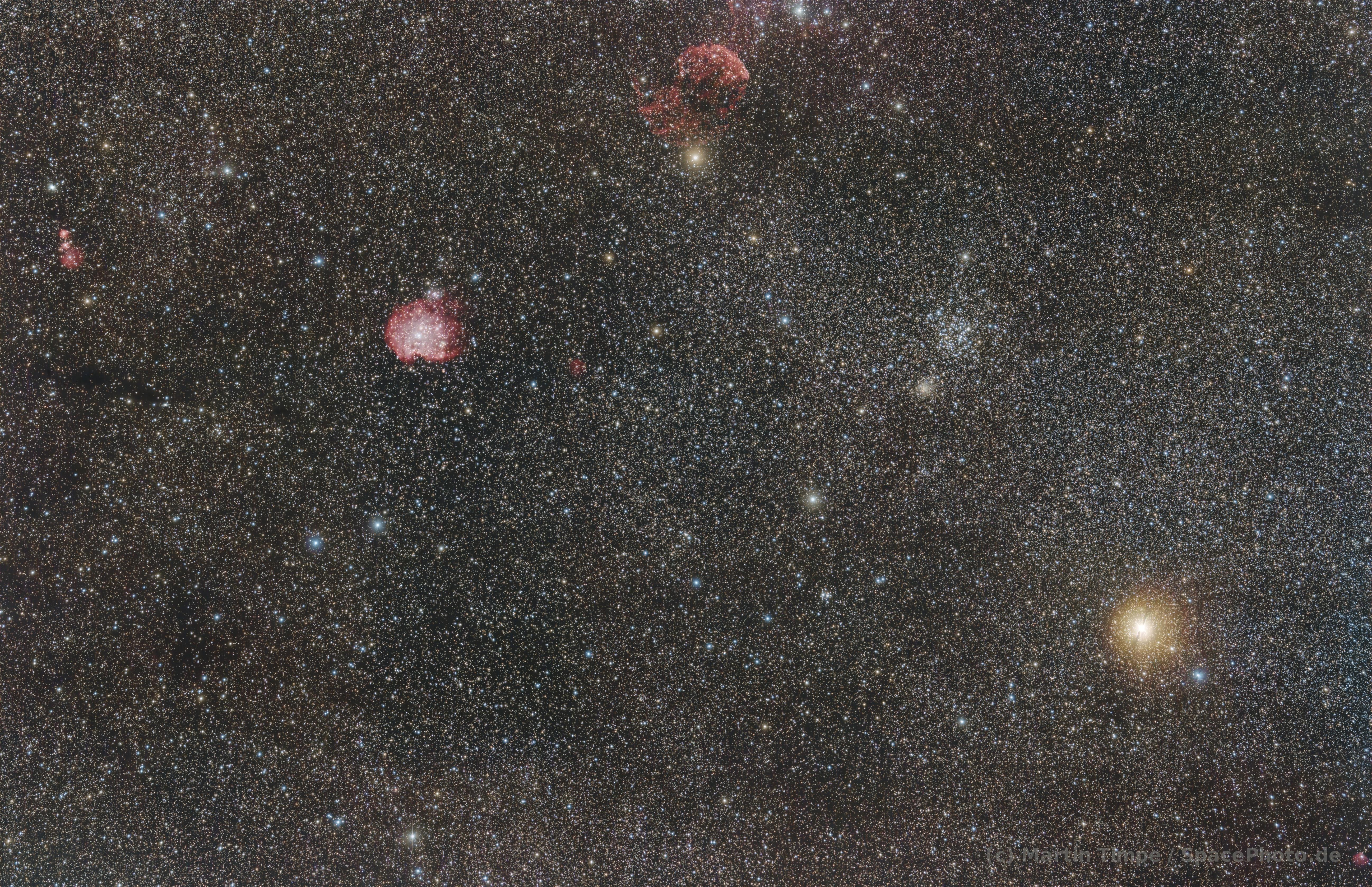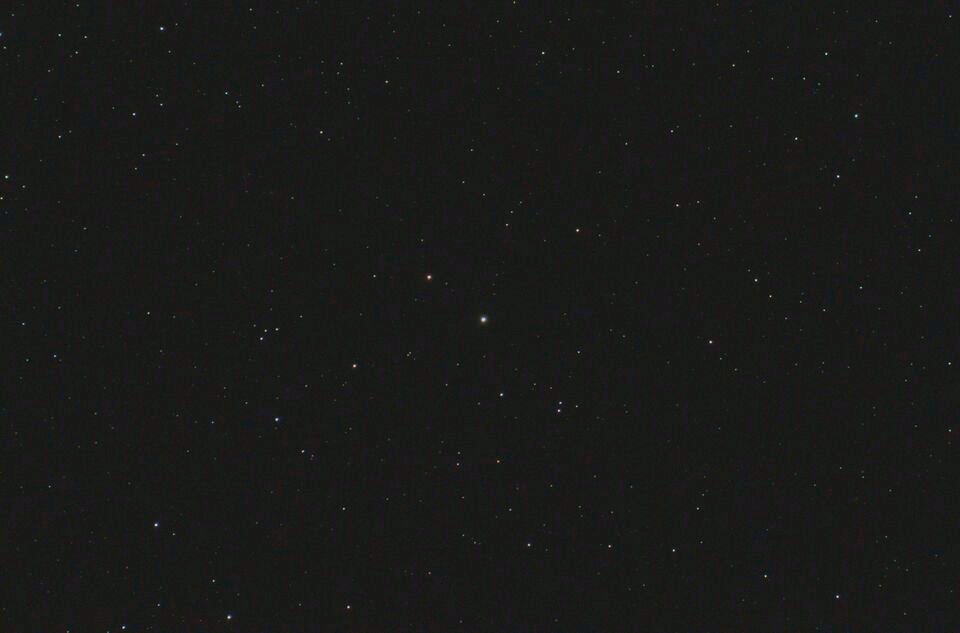Mars close to Constellation Gemini on 25.03.2023
A wide angle shot on the island La Palma shortly after new moon. Due to the long exposure times the planet Mars can be seen as a bright reddish-yellow spot in the lower right corner whereas some well known deep-sky objects (the open cluster M35, the jelly-fish nebula IC 443 ant others) can be seen in the upper half of the image. The view was unfortunately a bit clouded by Sahara dust as a result of the weather phenomenon "Kalima" and the moon crescent illuminated thereby the sky already considerably.


